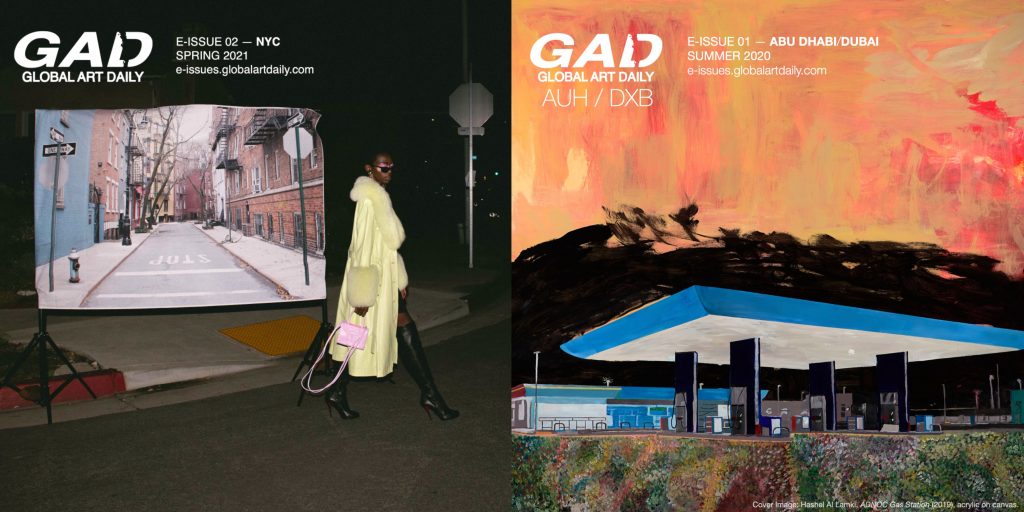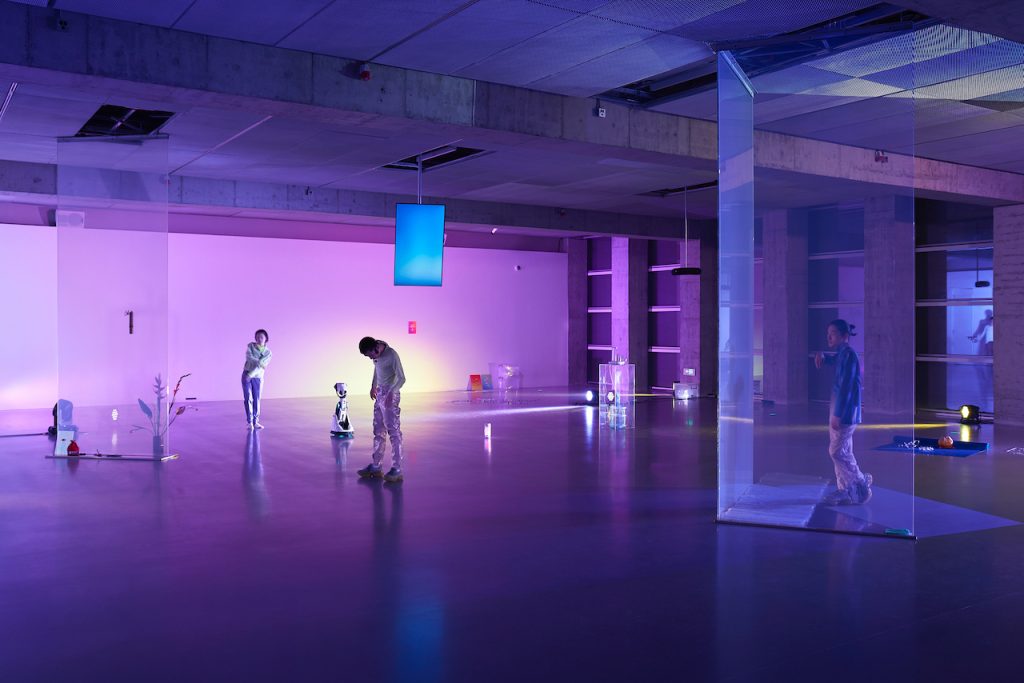“FRANK” is the story of a character with innocent brutality and charm who travels through a psychedelic world. It is a collaboration between Jim Woodring, an alternative comics writer who has lived with hallucinations since childhood, and his “prophet”. We interviewed him via email about his “semi-realistic” creative path in cooperation with his imagination, and how he creates stories in FRANK.
I’ve seen various interviews, but I’d like to ask you a question. What exactly is the world of FRANK?
I will tell you the truth. The world of Frank, which is called The Unifactor, is a gift from my deep and knowing subconscious to my shallow and stupid aspect… the public me. The Unifactor is a miniature theater established entirely for my elucidation. It is also the author of the stories. In the early days all I had to do was catch the fruit as it fell from the tree, ripe and perfectly-formed. The stories came to me as if dictated; all I had to do was write them down. I knew when they were finished and ready to be drawn entirely by their feel. Nothing could have been easier than drawing those comics. They were not really by me but they were definitely for me.
After I had done a few I saw patterns in their structure. Every story introduced a new character. Every story had a moral or a message that was often very pointed. Most of the time I don’t see these until the story is finished. For example the story Frank’s Real Pa has Frank discovering a small rug that absolutely captivates him. He brings it home, lies on it, sleeps on it, dreams of it. It throws his life into chaos. That chaos and how it is dealt with is the nub of the story, but it can’t really be understood without the key that rug = drug. It’s the story of a drug user’s trajectory of understanding. If I’d realized that at the outset I might not have drawn it.
Please tell us about the hallucination of the frog. I heard that hallucination was very important for you when you were a student because you could not find a direction in life. What kind of vision did the frog bring to you? Do the frogs that play musical instruments in FRANK have anything to do with that vision?
Well, I was 19, had barely graduated from high school, was still living with my parents, and had absolutely no idea what direction to go in life. I took some general education classes at Glendale Junior College, but I was in too much turmoil for anything to come of it. I attended classes but had no idea what I was doing there or hoped to get from it. One of the classes was on art history, which meant almost nothing to me at the time.
One evening we were shown slides of ancient buildings―Babylonian, Egyptian. When the screen went white I had a moment of electric anticipation and then a big rubbery green amphibian shot up and onto the screen, where it sat still except that one eye looked way, way up. I was so startled I yelled and tipped my desk over trying to get out of there.
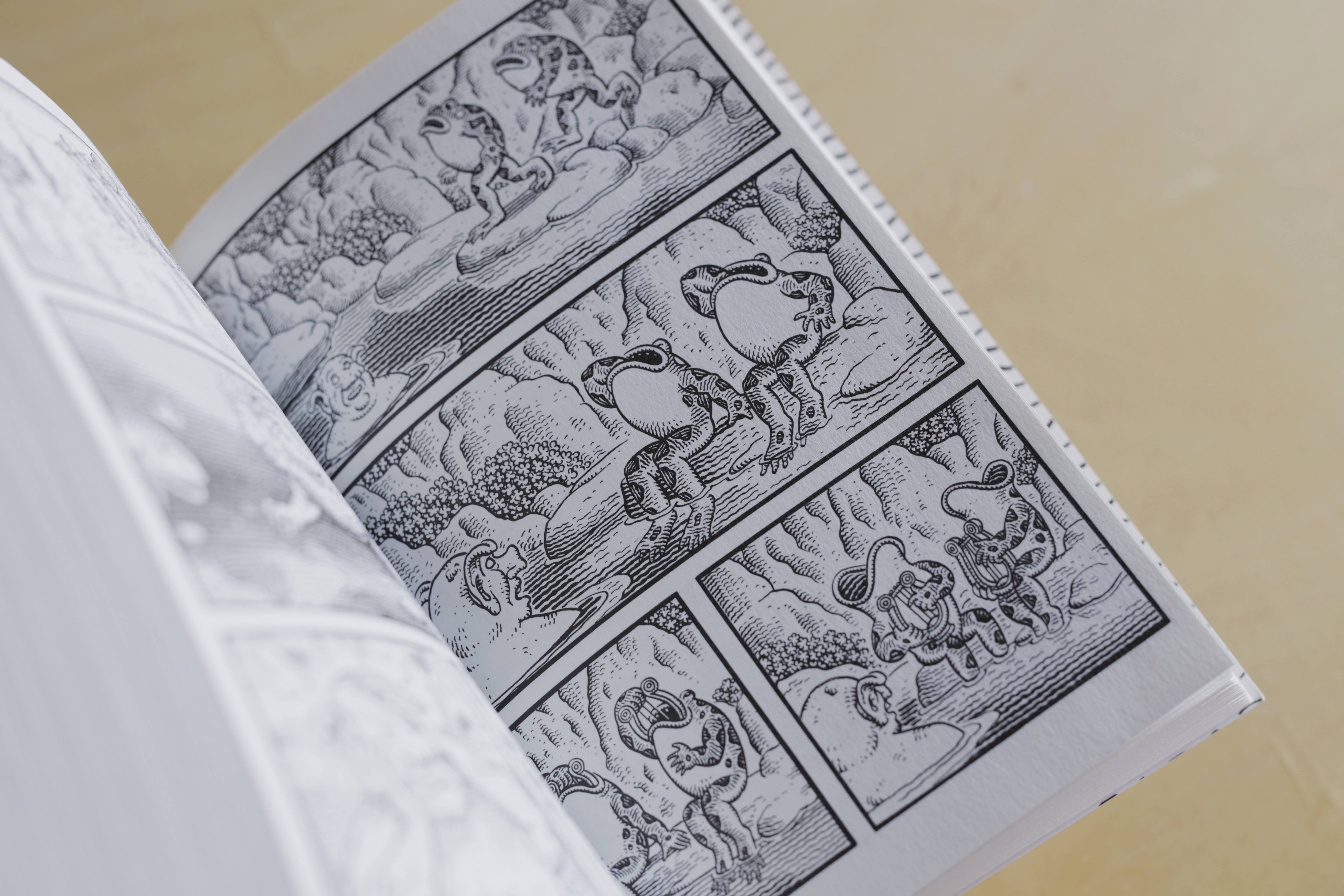
Afterwards I thought about it and drew it compulsively. It obviously meant something. It was allied to a number of other expressions of aching, yearning, searching―surrealism, devotional architecture, intellectual games, vanishing points, love. For a long time it was a stimulating and comforting presence in my life. I felt it was an emissary from a place I wanted to go. For a long time I could not resist looking over every wall I came across. I had an overwhelming sense that the answer I sought was hidden in plain sight.
Unfortunately it fortified me not to straighten up and fly right but to dive deep into alcohol and hallucinogens. It was a kind of horrible mysticism, I guess.
The frogs in the Frank stories are just frogs. I could watch frogs all day.
When I read FRANK, I can’t help being curious about the ManHog and how he is treated. His home seems to be an old hut, and while he’s always forced to do some kind of labor or suffer horribly, he also has contact with humans, and he sometimes undergoes a “human-like” transformation. I feel that this character is a very big part of what makes FRANK so uneasy, but what do you reflect in him? and what kind of role does he play in FRANK?
Manhog is the only character in the Frank stories who has a human being’s capacity for learning and change. He seems to have been brought there as a punishment. Life in the Unifactor is an ordeal for him. He’s a despised outcast. But it seems self-inflicted, for he has some brains and even a moral compass. He wants to rise to the occasion. In the story Weathercraft he becomes what Vedantists call jivanmukta, liberated while in the body, and is offered permanent release from the Unifactor; but his newfound altruism compels him to forego this release in order to undo a bad situation he felt responsible for. So he has tremendous ups and downs in his tumultuous life.
I’m working on a sequence wherein Manhog behaves very badly and gets a very bad comeuppance. It’s hard sometimes to subject him to such cruelty. If it can be arranged I’d some day like to draw his escape into a place where he can be happier.
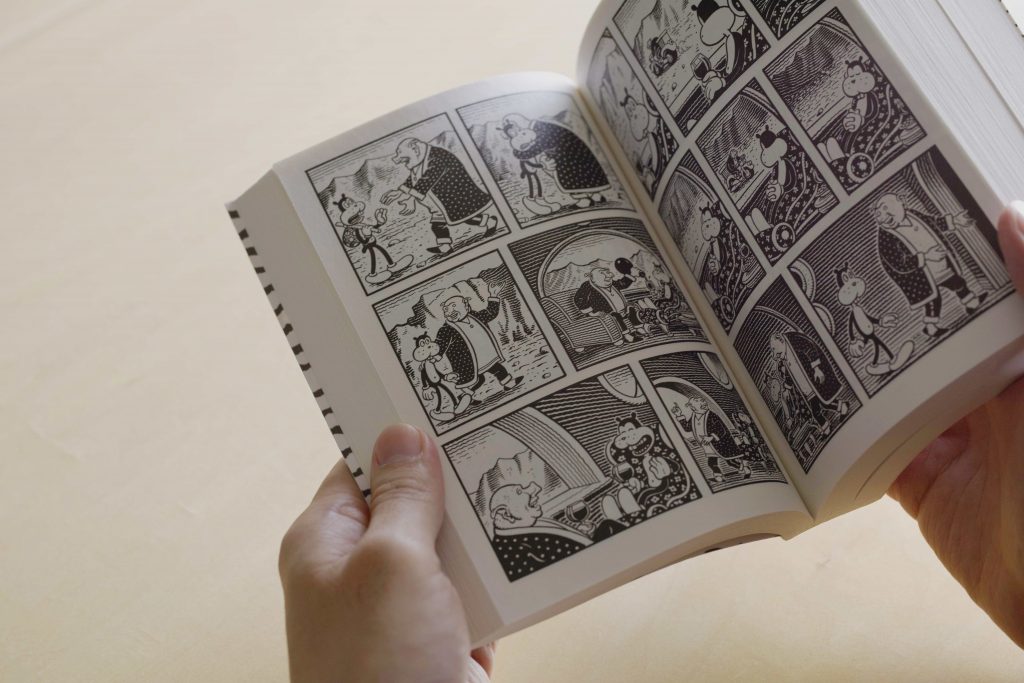
In FRANK, there are no dialogues, but instead, the characters’ eyes and detailed gestures are used to supplement the storyline. This gives the reader a wider range of interpretations, and at the same time, I feel that it has the unique effect of FRANK’s “unreadability” (that is, you can only get close to the characters’ psychology to a certain extent). What are your reasons for not using dialogue?
The first Frank story presented itself as a silent story, and that set the pattern. It would, of course, be a radically different comic if there was dialog. Much easier to produce, for one thing. Instead of a narrative sign that says, ’Next morning…” I have to draw at night falling and then the sun coming up. It’s a restriction and a discipline. But the truth is that I had very little say in how the stories came into being. The ideas came and I was their servant.
Early on I experimented with dialog… drew a few short strips in which Frank and Manhog spoke just to see if it worked. Mundane! Ludicrous!
What is the position of the act of drawing comics in your mind? Is it a dialogue with the world of imagination, or is it more like a device to output your visions, delusions, and hallucinations?
It’s the second, a device to output visions etc. I really don’t understand how I draw comics, or why, or even how I feel about it. It isn’t a compulsion, it isn’t a job, it isn’t to compete. It didn’t come naturally to me- I’m not a naturally gifted artist. I don’t have range or virtuosity. It makes sense to me that I should do this, but like almost everything else in my life I have no real idea how I came to be so situated.
In fact I began drawing comics seriously because I was offered the opportunity. I was in my mid-30’s. Up to that point I had drawn a few not very good comic strips, and tried my hand at cartooning in general, and had decided to make straightforward works of art instead… drawings and paintings. I self-published these in a few issues of JIM, a xeroxed “illustrated autojournal,” simply as a way of putting my work out there and drawing attention to myself.
At that time I was working in an animation studio with Gil Kane, the great cartoonist, and he was good friends with Gary Groth, publisher of Fantagraphics Books. Gary saw JIM and offered to publish it if I would put comics in it. So I undertook comics in earnest so I could be published.
Comics is simply another form of self-expression, not suited to every artist but capable of transcendence in the right hands, i.e. George Herriman or Miyazaki. For me comics are like movies, stories told in time with actors and scenery. The form is easy as pie; anything that works is good enough. It all gets down to what the artist has to say. You don’t have to be a good cartoonist to make good comics.
In each episode of FRANK, how do you determine the end of the story? Do you have a consistent process or attention to detail in building your story?
The stories present themselves, beginning, middle and end. I have to figure out the pacing, structure, page breaks and so on, but the scripts come as if dictated. Unless I interfere.
When I was collecting the script for Congress of the Animals I made the mistake of consciously changing the main thrust of the story; I decided it would be fun if Frank found a soulmate. The Unifactor boycotted me over this… stopped communicating with me entirely. I spent a rough, stupid, stubborn year working out the story. As I was finishing up the Unifactor came back and put a few things in, which turned out to be hints to solving the problem I had unwittingly created.
It wasn’t until I held the printed Congress book in my hands that I realized the magnitude of my error. By giving Frank a loving companion I had destroyed the entire setup. The stories had always been driven by Frank’s drive to investigate his world and discover the hidden wonders there. He jumped out of bed every morning at sunrise and ran outside to salute the sky. Now that he was as good as married he would sleep in, go joyriding, do the crossword.
I was horrified and begged the Unifactor to forgive me and find a way to deal with this. It did. For penance I had to redraw the first six pages of Congress over, line for line… because even though identical in appearance it was actually a different sequence, so the old one could not be used. I had to create an identical but physically different reality. Fran was removed from the equation in a way that amplified her dignity at Frank’s expense. And I was free to continue with Poochytown.
Incidentally I am in the process of finishing up 100 pages of Frank material that will be combined with the previous 3 books to create a single 400 pp story to be called One Beautiful Spring Day.
You mentioned in an interview that you have been thinking about death a lot since you were a child and that you were obsessed with it. Now that you got older, have your thoughts about death changed in any way? How do you perceive death?
Well, death. What else is there? I’m persuaded by the philosophy of Advaita Vedanta that the essential consciousness of our being is eternal, and I have a hunch that once you get past the misery of dying death itself is bliss. If so, you can see why that knowledge would be taboo.
A lot of my early fear of death came from a belief I would die young, presumably of cancer, as my mother did. I was afraid I would die before experiencing enough of life to learn some things about it… before I could redeem myself. I am beyond grateful that I’ve lived to be this old.
Now I see death as a deadline… the point beyond which I won’t be able to do anything more in this life. That motivates me to accomplish as much as I can in the time I have left.
The shapes and patterns of the backgrounds and mob characters in FRANK seem to be inspired by plants, insects, and reptiles in the natural world. What has influenced these visualizations? I imagine from your living environment that it is a feeling that you developed while observing nature in your production environment. I would like to know about your relationship with nature.
If I could spend my life away from all but a few people and enjoying the natural world I would be very happy indeed. My idea of heaven on earth is to spend an hour looking closely into a frog pond.
Once I was hiking with a friend; when we reached the summit and were taking in the view he said, ”I look at this and I think about all the time, all the evolution, all the geology, all the overwhelming complexity of detail that went into this.” My reaction was to address the landscape: “Who are you? What’s the game? What is going on? Speak to me!” That sums up my relationship with nature.
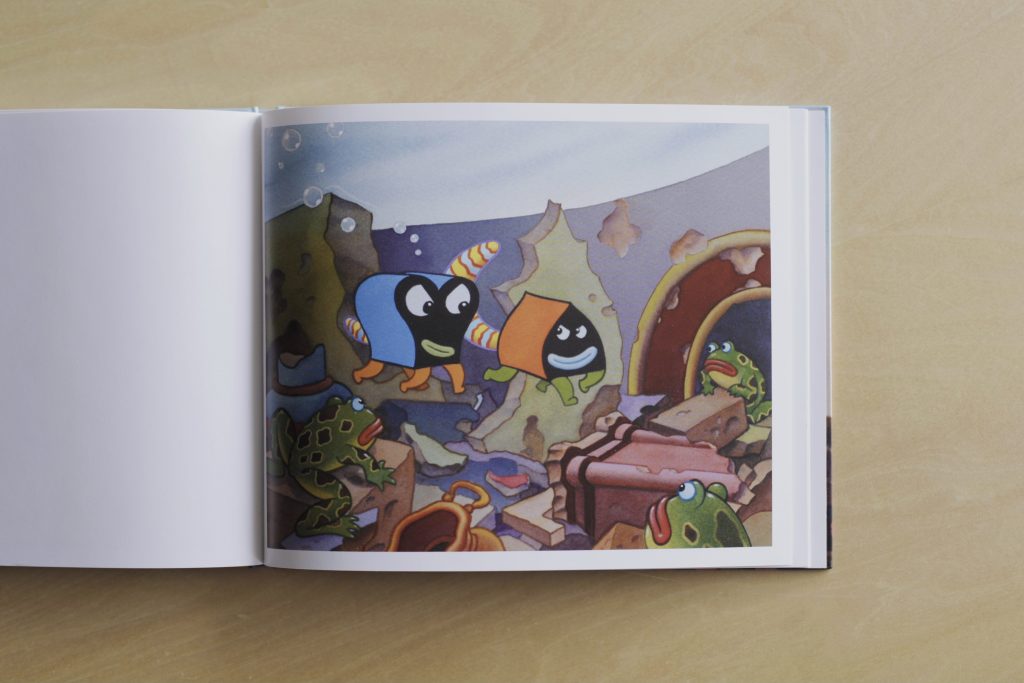
Sitting for a long time, moving your arms and hands as much as you can, I think drawing is a very physical act. It is a job that requires more than we can imagine, where your brain and body need to be well managed and linked. Is there anything that you keep in mind when managing your body?
Sitting at a drawing table all day is very destructive to the body, of course, so one has to do the things- frequent breaks, exercising, stretching and so on- that offset that. My drawing table can be raised and lowered with a hand crank, so I divide my time between sitting and standing.
I thought you didn’t want to be very active in social interaction, so I was very surprised that you started Instagram. Please tell us why you started social networking and what you think about it.
I joined Instagram because I was advised to. I am ambivalent about it, and tend to neglect it. I’m not very good with social media. I have a hard time reading people in person; online I’m hopeless. Plus I have a hair-trigger temper and always rise to the bait. Combined with my propensity for unintentionally saying exactly the wrong thing it’s more than I can manage successfully.
What impact did the pandemic have on you? I’d like to ask you how you are feeling after 2020. Does the social situation ever affect your style of drawing?
Truth to tell the pandemic hasn’t affected my living and working situation very much. I love a certain amount of solitude. My wife and I live quietly on a rural island off Washington State. We both work at home. I go into my studio every day and work, as usual. Of course we’re worried as hell about what is happening, but I have to say not having Donald Trump as President makes me as happy as anything can these days.
Now we are living in a society that has become a disaster, what do you think art or comics can do?
There’s a saying I’ve always disliked: “A person who isn’t interested in politics is like a drowning person who isn’t interested in water.” I think a drowning person who is interested in water is insane. Air is the thing.
What can art, including comics, do during these upsetting times? It can remind us that politics is a subset of life, not life itself. It can appeal to and nourish our starved inner natures. It can give us some pleasure and vicarious kinship and send us away remembering that there are some glorious things in the world, including ourselves.
